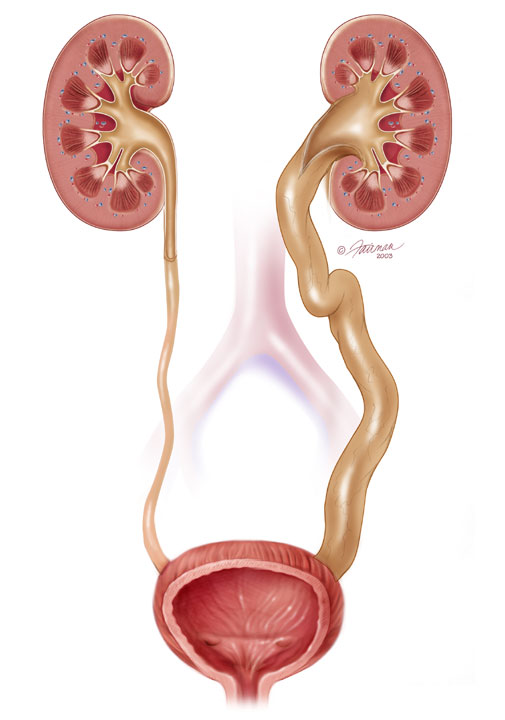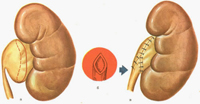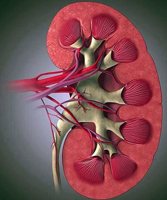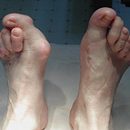What is hiding behind the word megaureter? What is the danger of megarether? What are the causes of megaureter? How manifests and diagnosed Megaureter? How the Megaureter is treated? Read in this article.
Content
Megaureter
Megaureter is a congenital expansion of the ureter, accompanied by a violation of its emptying. Ureterals are two tubular organs located between the kidney loins and the bladder and their main function is the passport of urine from the kidneys in the bladder.
What is the danger of megarether
In children's practice megarether – One of the diseases leading to the disruption of the kidney function, and, with a bilateral process, up to renal failure. With the expansion of the ureter, its transport function suffers and the impossibility of fast movement of urine in the bladder and removing the microbial flora penetrating into the urinary travelers causing chronic kidney inflammation (pyelonephritis). Another dangerous consequence of urine stagnation in the ureter is to increase the pressure in the renal pelvis and cups, which causes the cause of the renal blood circulation. The outcome of chronic inflammation and renal blood circulation disorders is the scarring of renal tissue (parenchyma) with a function loss (secondary kidney wrinkling, nephrosclerosis).
Causes of Megaureter
Several reasons for the formation of megaureter. The main reason is the increased pressure inside the ureter with the difficulty of urine outflow. And sometimes the pressure is normalized, and the expansion of the ureter remains. There is also a congenital insufficiency of the muscular shell of the ureter. At the same time, the normal muscular layer of the ureter is replaced by a scar with inelastic cloth. The ureter is so weak, which is not able to effectively push the urine in the bladder. Another reason megaureter – The narrowing of the ureter at the place of its connection with the bladder. Bubble-ureteral reflux of a large extent (PMR - cast urine from the bladder in a ureter and kidney) may also be the cause of the development of megarether.
The bilateral megaureter is more likely due to the impairment of urine outflows according to urethra, due to the presence of a congenital valve in the urethre or persistent spasm of a urethral sphincter occurring in neurological disorders. Such a megaureter is called secondary.
Manifestations Megaureter
Megaureter, as a rule, is diagnosed with the ultrasound of the fetus. After birth in the absence of the pathology of the bladder and the urethra Megaureter usually does not manifest itself clinically. In the future, if the diagnosis was not supplied by intrauterine, the disease can manifest themselves an unexpected attack of pyelonephritis. Elder children sometimes have complaints of abdominal pain or in the lumbar region, a blood admixture in the urine, tumor-shaped tumor education, urinary incontinence and the formation of stones in urinary tract.
Diagnosis of Megaureter
 The first time about the presence of Megaureter usually reports a specialist in ultrasound diagnostics. If a child has a megaureter during an ultrasound, it is necessary to prepare a complete urological examination to determine the cause, forecast and tactics of treatment.
The first time about the presence of Megaureter usually reports a specialist in ultrasound diagnostics. If a child has a megaureter during an ultrasound, it is necessary to prepare a complete urological examination to determine the cause, forecast and tactics of treatment.
Intravenous (excretory) urography Allows you to see the anatomical structure of the ureters, determine how well the kidneys produce urine and exempted from it. There are a diameter of the ureters, which is visible during the megarether more than 7-10mm.
Miking cysturketrography (MTSUG) It is performed in suspected of the presence of bubble-ureteral reflux (urine cast from the bladder in the ureter), to determine the passability of the urethra, eliminating the bubble-ureteral reflux, indirect estimate of the bladder function.
Radioisotope examination of the kidneys (static or dynamic nephrocintigraphy) - is performed to evaluate the kidney function and the degree of violation of urine outflow on the affected ureter.
Molds Megaureter
The survey on the reflux and the violation of the ureter (obstruction) is allowed to include the Megaureter to one of the four main options:
- Refluxing Megaureter - the expansion of the ureter causes bubble-ureteral reflux
- Obstructive megaureter – A pronounced narrowing in the bottom of the ureter causes its expansion, and a violation of urine outflow.
- Reflux and obstructive megaureter – If there are simultaneously narrowing ureter and bubble-uretera reflux
- Non-refluxing unstructive megaureter – Expansion of ureters without an explicit violation of the passability of the ureter and bubble-ureteral reflux
After evaluating the kidney function according to radioisotope research and blood biochemistry, the doctor can evaluate the severity of kidney lesion, its resource and predict the perspectives of treatment and threats for further life (with double-sided anomaly).
Easy degree: Little expansion of the ureter (ureterectation). It is often accompanied by a moderate expansion of the pyelkota (pyelectation) sometimes extended only the bottom department of the ureter (Ahalasia).
Middle degree – Megaureter. The expansion of the ureter is usually accompanied by a moderate expansion of kidney pelvis and cups.
Heavy degree – Sharply pronounced expansion of the pelvis and ureteral is called ureterohydronphrosis or hydrometeronephrosis. Ureterohydronphrosis is almost always accompanied by a decrease in the kidney function.
Additional studies in Megaretre
Urodynamic functional study of the accumulative and evacuator functions of the bladder is very often useful for choosing reasonable tactics and adequate megaureter therapy. It is carried out by measuring the pressure in the bladder when the liquid is introduced through the urethral catheter. Increased pressure in the bladder can support the expansion of the ureter or cause its further progression.
The diagnosis of megaureter in most cases is not an urgent indication for surgical treatment, so there is time to bring together all the research results, verify the diagnosis and decide on the treatment. The exceptions are the most severe forms of megaureter, complicated by acute pyelonephritis or renal failure, requiring urgent action.
In the first year of life, the reasonable testimony for operations are as a rule, as a rule, only as a result of observation and evaluation occurring over time of change (process speakers). Evaluation of the dynamics is performed with standard ultrasound with filled and empty bladder, every 2 – 3 months.
Treatment of Megaureter
The choice of the method of treatment or surveillance mode depends on the severity of pathology, the age of the child, the presence of pyelonephritis, the degree of violation of the kidney function.
 The disease can be resolved independently with a moderate obstruction, a nonresity of the expansion of the ureter (ureterectation, achalasia), or bubble-ureteral reflux (PMR) of a small intensity. With the changed function of the bladder, urinary tract infection, to achieve a positive effect requires the selection and treatment of drug therapy. Evaluation of changes (speakers) is carried out at control surveys (1 time in 2-6 months) and according to the results of the tests.
The disease can be resolved independently with a moderate obstruction, a nonresity of the expansion of the ureter (ureterectation, achalasia), or bubble-ureteral reflux (PMR) of a small intensity. With the changed function of the bladder, urinary tract infection, to achieve a positive effect requires the selection and treatment of drug therapy. Evaluation of changes (speakers) is carried out at control surveys (1 time in 2-6 months) and according to the results of the tests.
Surgical treatment is necessary in children with heavier forms of megaureter negatively affecting the kidney function. Indications for surgical treatment with intrauterine diagnostics of the megaureter are usually set after the observation period. from 1 to 6 months after birth.
The main type of plastic operations performed in the megarether is called reimplantation of the ureter. The meaning of the operation is reduced to cutting off the ureter from the bladder above the narrowing, and the creation of a new compound (anastomosis), freely passing the urine from top to bottom and preventing urine cast (reflux) in the kidney. To prevent reflux, the lower part of the ureter is carried out in the tunnel under the mucous membrane of the bladder, as a result of which the valve is formed, closing when the bladder is filling. During the intervention in the ureters and the bladder, drainage tubes are installed, providing good healing of anastomosis and preventing urine leakage through the seams. Urinary drains are removed by 7 –14 days of the postoperative period.
In particularly severe cases of a bilateral megaureter (more often this is a secondary megaureter), it may take point treatment. The first stage of the ureter of the affected kidney is displayed on the skin (ureterostom) to ensure free outflow of urine, eliminating infection and maximum recovery of the kidney function. In case of refluxing hydrometeronephrosis, a dilution of urine from the bladder is possible by means of a catheter or by forming vespitomas – Temporary tube canal between bladder and leather.
After the maximum possible restoration of the function of the kidneys and the tone of the ureters, the reimbalance of the ureter and the closure of ureterostomas or versicate is usually performed. Unhindered outflow of urine from the kidneys is ensured, which favorably affects its functions and serves as prevention of exacerbations of pyelonephritis. Besides, «Unloaded» The ureter is gradually shrinking, which allows you to spend the second stage of treatment - its reimplantation.
Some clinics use endoscopic treatment methods for obstructive megaretherer – Supporting (expanding the narrowed ureteral department) and the installation in it for a long time tube – Stent. However, according to our data, with a progressive megaureter, this method is significantly inferior in efficiency to surgical treatment, since the vicious narrowed area of the ureter continues to create an obstacle to urine outflow. An attractive feature of the method is his small trauma. But it should be borne in mind that it is often necessary to repeated stent installation, which increases the risk of infections, the number of hospitalizations, anesthesia, antibiotic courses, and T.D.
Careful initial and carried out in the process of observation The survey, along with reasonable and qualitatively conducted treatment, as well as attentive maintenance of the postoperative period is extremely important for all children with megaureter to achieve an optimal result. The goal is to determine the problem, its active proactive treatment, and examination to identify new circumstances and their correction.
Features of Megaurether Newborns
In the first 2 years of life and especially during the first 6-12 months, the degree of expansion of the ureter during the Megarether can change significantly. Moreover, a significant amount of patients occurs, and the improvement in the functions of the kidney and ureterals, the part of children is progressive, and in the remaining group, the state of the upper urinary tract remains unchanged. Unfortunately, the method that allows you to precisely predict the process dynamics, currently does not exist. Thus, infants only regular control of the state of the upper urinary tract allows you to clarify the trend (development trend) of the disease and decide on therapeutic tactics.









